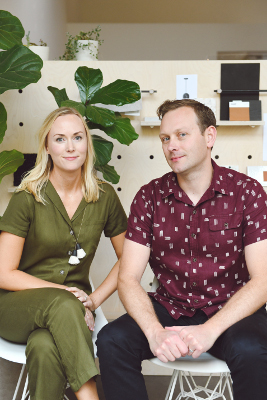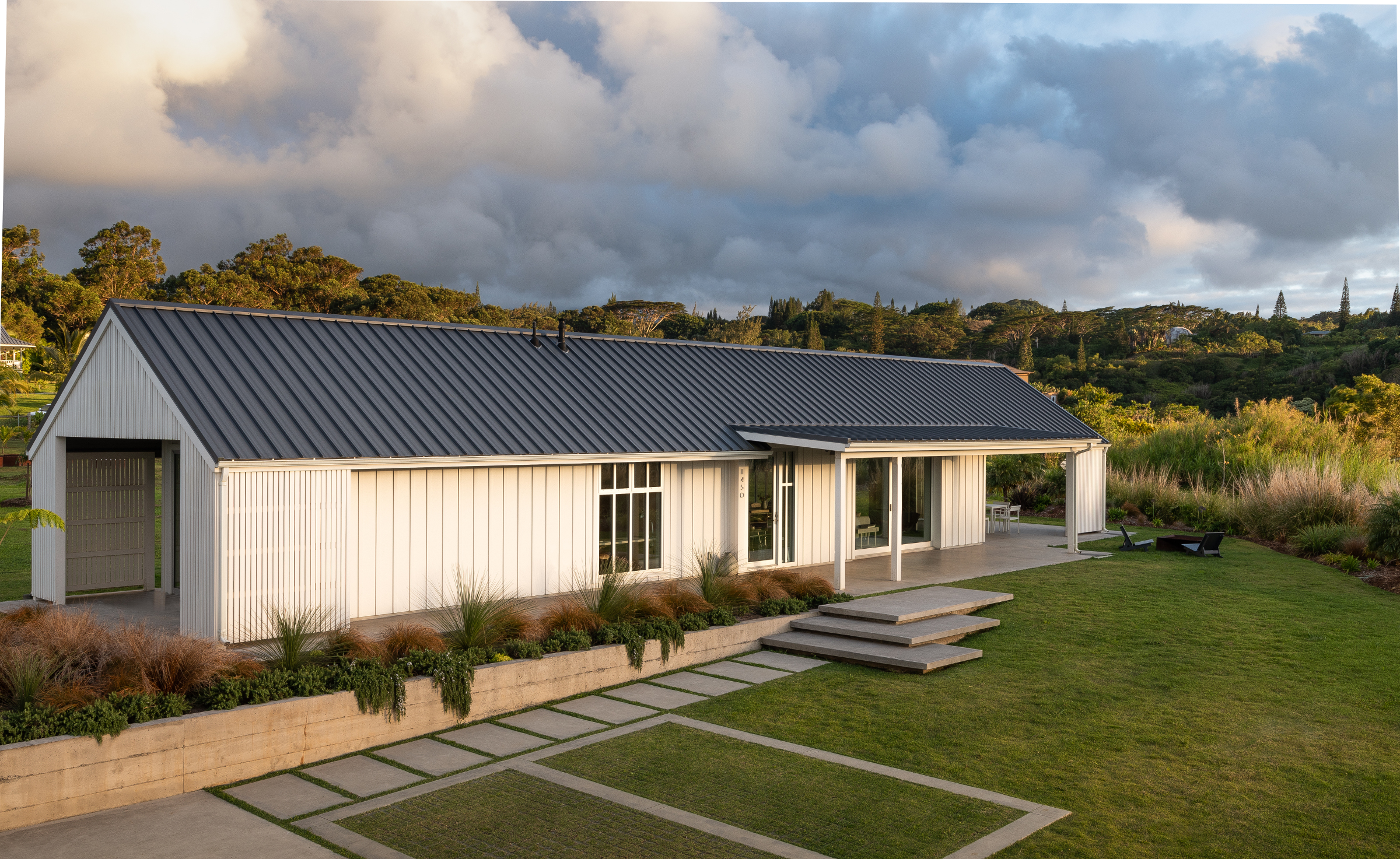By Jeff Guggenheim, AIA and Jenny Guggenheim

Known for their highly-considered architectural spaces and rich interior environments, Portland based Guggenheim Architecture + Design Studio was founded by husband and wife team Jeff and Jenny Guggenheim. Together with their 5-person studio, they strive to produce custom details specific to each project and client with an eye for engaging, one-of-a-kind design elements. Their studio has received multiple AIA and IIDA design awards and has been published by Dwell, Domino, Luxe and Gray Magazine. Jeff was recently named AIA Portland Young Architect of the Year.
How does your firm define its business development strategy(s)?
Business development to us is a very broad term. It is essentially everything you do to ensure that your business is successful and continues to grow; and by grow, I really mean stoking people’s desire to hire you to design their buildings and spaces. Once you get past the requirement of attracting clientele, the true nuance of what you are doing starts to kick in. What do you want? Who do you want to work with? What kind of projects interest you? This list goes on and on and typically evolves as time goes on. Eventually, the answers to these questions will end up ultimately forming the values held by you and your business.
What are some of the techniques that you use to implement that strategy?
Our studio places a high value on our relationships. Whether this be clients, contractors, or colleagues, if people know you and want to work with you, you will likely be successful. Someone once told me that the key to successful relationships was to always do two of the following three things:
- Meet your deadlines.
- Do high quality work.
- Be a likable person who people want to be around.
I love the fact that in order to be successful you only need to check two of these boxes! Of course, we strive to provide equal emphasis on all three of these areas, which I believe is foundational to our practice and our ability to attract clients.

We are looking to strengthen a client relationship, how do we go about doing that?
We’ve found that creating a strong client-architect relationship is a process that begins well before the client signs the dotted line of your AIA contract. Attracting and vetting clients with values and expectations that align with your own is incredibly important. Unfortunately, it’s very easy to disregard that queasy feeling about a potential client’s personality when you’re excited about designing their project. Trust your gut! If it doesn’t feel right, it probably isn’t.
Once you’ve gotten over the hurdle of attracting a client whose values and personality mesh with your own, it is important to set appropriate expectations for the project. Clear expectations provide the roadmap to maintaining trust throughout the process. Meeting your client’s expectations regarding time, budget and design quality are key to maintaining and strengthening your relationship.
Explain how the firm has achieved a “market breakthrough”.
We were recently hired to master plan a 600-acre guest ranch. It’s currently a working cattle operation, and our clients are looking to add a lodge, cabins and event space. It’s a huge project for us and something that our studio is very excited to undertake. With this said, projects like this don’t typically just walk through your door, they must be cultivated.
So, for the backstory, I had read an article in the local news for the small rural town that I grew up in. The article was about a couple who had bought an agricultural property just outside the city limits with plans to create a guest ranch. This peaked my interest; I love rural design projects, hospitality is a key interest and furthermore, when I was 14 years old, I bucked bales of hay on this ranch. After a little sleuthing on the internet, I was able to find the owner’s email and sent an introductory email sharing my interest, qualifications and my childhood roots in the community and the ranch. This initial inquiry spurred the conversation that ultimately led to us getting the project. Putting yourself out there, throwing you name in the hat and forging connections is key to finding interesting and fulfilling projects for you and your firm.

In the ever-changing marketplace, how does one maintain competitive focus?
Competition between architects is toxic and detrimental to our profession. Chasing market trends in the name of being competitive seems counterproductive and reactionary. Our studio is focused on cultivating long term relationships, creating thoughtful designs, and providing our clients great service.
Strategic partnerships could be the strategy that wins a client, how does that happen?
We often find that having good relationships with contractors has been a great way to be introduced to potential clients. Often, people might first approach a trusted contractor prior to an architect. If this happens to be a contractor who we’ve had past success with, they will refer the client to us to perform the design work. This is great, because it allows a contractor to be involved from day one. Early formation of the project team is preferred as having early contractor input can be critical in setting appropriate budget and timeline expectations.
I am an emerging professional / seasoned technical staff / never leave my desk, how can I impact business development
All members of our studio have an impact on our ability to attract new work. The little things matter quite considerably. Off the top of my head, a few ways a staff member can have an impact:
- When outside of the office, share with people what you do and who you work for. Hand out your business card; it is why we have them!
- If a previous, current or potential client walks in the door of the office, greet them and ask them if they would like something to drink. Hospitality goes a long way.
- Engage with people both inside and outside of your work circle. Volunteer, be social, go out to lunches; forge friendships and connections with people whom might need an architect.
- If you hear of an opportunity that might be a good fit for your office, bring it up to the principal and ask if you could reach out to express the firm’s interest. Initiative is huge!
What is the role of outside activities, relationships, etc. in generating opportunities and new business?
For us, there is no inside or outside of work. We are a husband and wife team, which pretty much obliterates any clear separation of what constitutes work and personal. We both were born and raised in Oregon, and on multiple occasions childhood friends, or parents of friends, have become our clients. We’ve hired our buddies from architecture school to be part of our studio team. We’ve had friends become clients and clients become friends.
_____________________________________
Leading Guggenheim Architecture + Design Studio, Jenny Guggenheim is Principal Architect and Design Director; Jeff Guggenheim, AIA is a Principal Architect and LEED accredited professional. Jeff and Jenny may be reached at e.hello@guggenheimstudio.com.
Photo Credits:
- Photo of Jenny and Jeff Guggenheim: Mikola Accuardi
- Photo of the Wriff Residence: Adam Guggenheim
- Photo of Haiku Cottage: Haris Kenjar
(Return to the cover of the 2019 PM Digest: Developing business)